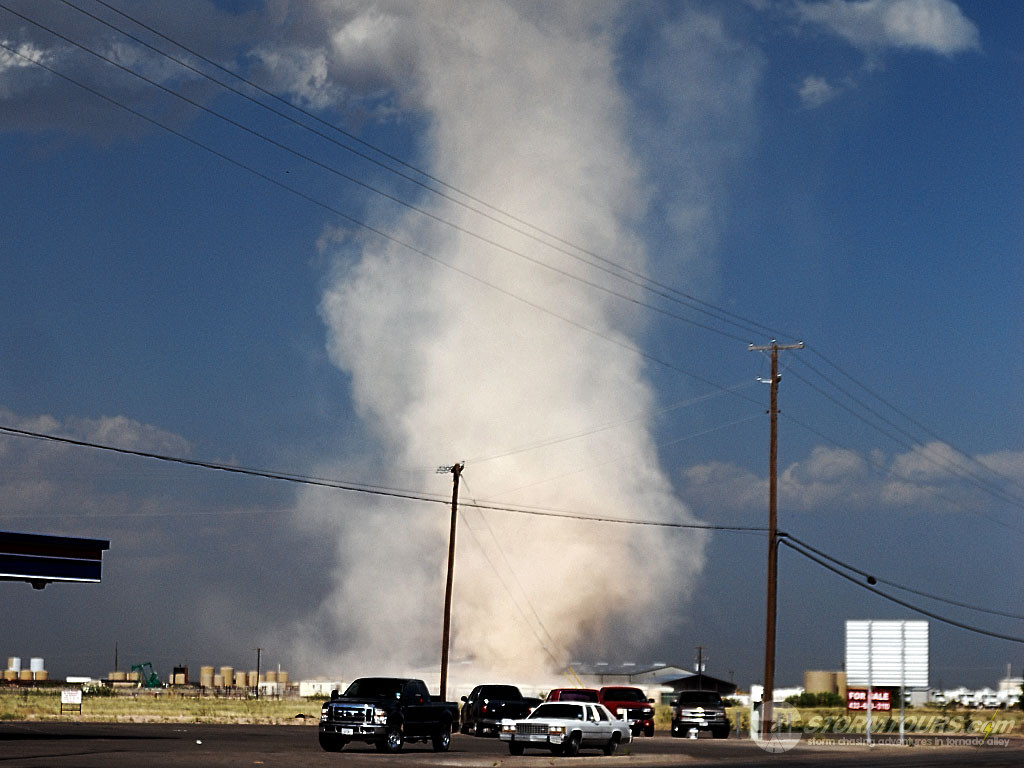

Landspouts are considered a subset of the larger, more well-known tornadoes, the. Waterspouts are similar to landspouts, except they occur over water. A landspout is 'a weak tornado,' according to a meteorologist at the National Weather Service in Phoenix on Monday. A landspout is a tornado with a narrow, rope-like condensation funnel that forms while the thunderstorm cloud is still growing and there is no rotating updraft - the spinning motion originates near the ground. NSSL researchers are looking for ways to detect QLCS tornadoes more effectively.Īnother type of non-supercell tornado is a landspout. These tornadoes, however, tend to be weaker and shorter-lived on average than those associated with supercell thunderstorms. QLCS tornadoes frequently occur during the late night and early morning hours. Nearly 20% of all tornadoes are associated with lines of strong thunderstorms called “quasi-linear convective systems” (QLCS). QLCS tornadoes are associated with lines of strong thunderstorms, and frequently occur during late night and early morning hours. Why does one supercell thunderstorm produce a tornado and another nearby storm does not? What are some of the causes of winds moving at different speeds or directions that create the rotation? What are other circulation sources for tornadoes? What is the role of downdrafts (a sinking current of air) and the distribution of temperature and moisture (both horizontally and vertically) in tornadogenesis? Non-Supercell TornadoesĪnd, since not all tornadoes come from supercells, what about tornadogenesis in non-supercell thunderstorms? As few as 20 percent of all supercell thunderstorms actually produce tornadoes. Once the updraft is rotating and being fed by warm, moist air flowing in at ground level, a tornado can form. Rising air within the thunderstorm tilts the rotating air from horizontal to vertical – now the area of rotation extends through much of the storm. But higher up, at 5000 feet above the same location, the winds are blowing from the southeast at 25 mph! An invisible “tube” of air begins to rotate horizontally. Īn example of wind shear that can eventually create a tornado is when winds at ground level, often slowed down by friction with the earth's surface, come from the southwest at 5 mph. According to the NOAA, a landspout is a tornado that doesn't form from an organized storm-scale rotation and is the land-based equivalent of waterspouts. Newsweek reached out to Evans for comment.Tornadoes that come from a supercell thunderstorm are the most common, and often the most dangerous. Usually there are no wall clouds that are associated with landspouts. He confirmed in his 30 years of flying, he's never seen anything like it. A landspout begins by horizontal tubes of air that get tilted upright by an updraft of a thunderstorm. Landspouts, similar to waterspouts but on land, are often identified by their funnel, with the NSSL's description matching the one Evans gave to the Post, who compared it to a "rat's-tail-looking thing." The National Severe Storms Laboratory (NSSL) went into further detail, saying: "A landspout is a tornado with a narrow, rope-like condensation funnel that forms while the thunderstorm cloud is still growing and there is no rotating updraft-the spinning motion originates near the ground." While landspouts are classified as a type of tornado, it differs in several ways, the easiest differentiation being landspouts form from the ground up, while tornadoes form from the clouds down to the earth. That said, landspouts usually only last a few minutes and typically dissipate quickly." He wasn't in danger," she tweeted.īut, WeatherNation said landspouts should still be "taken seriously," adding: "They are usually weaker and shorter lived than "regular" tornadoes, but they still pose a threat to life and property. "He was out looking for lift for gliding, and found it. Weather Service meteorologist Frederick Kruse in Dodge City says landspouts typically last only a few minutes and rarely do damage. Evans confirmed her husband was perfectly safe. I just kept flying around that thing."ĭespite circling the potentially deadly weather phenomenon-which can reach wind speeds of 100 miles per hour according to WeatherNation-J. It was going down and down and down, but there was no turbulence. Then all of a sudden that vapor funnel started forming. " was raising me up at about 100 or 200 feet per minute. I started getting an indication I was getting lift, so I circled in there with them," he said. "They're always a tell-tale sign of where a thermal might be. XKROONUNGn- J Evans June 13, 2021Įvans told The Washington Post he often rides these thermals, and initially spotted some hawks doing the same thing-which he says is a good indicator of where they're occurring.


 0 kommentar(er)
0 kommentar(er)
